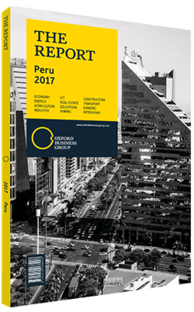Eduardo Ferreyros, Minister of Foreign Trade and Tourism: Interview

Interview: Eduardo Ferreyros
What specific steps are being taken to overcome airport capacity limitations?
EDUARDO FERREYROS: To increase the flow of international tourists and attract more airlines, we need to define a general strategy, which should boost the strengths and correct weaknesses that have been identified in the tourism and aviation sectors. Such a strategy must take advantage of the fact that Peru has a broad airport network, made up of 117 operational terminals, including 23 airports, 75 airfields and 48 helipads. Of these airports, 12 are international, including Arequipa, Cusco, Chiclayo, Iquitos, Juliaca, Lima, Pisco, Piura, Pucallpa, Talara, Tacna and Trujillo. Concessions have been granted for an additional 19 airports, each with its own respective annual action plan.
Lima’s Jorge Chávez International Airport (AIJCH), the most important air transportation facility in Peru, currently exceeds its service capacity. When the airport welcomed 17.1m passengers in 2015, it surpassed the forecast figure, which was set at 10m passengers. AIJCH is not only the main point of entry and departure for tourists, but it is also an important regional hub. Two other airports, Cusco’s Alejandro Velasco Astete International Airport and Rodríguez Ballón International Airport in Arequipa, are also reporting considerable passenger traffic figures, with 2.9m passengers and 1.5m passengers in 2015, respectively. Although other regional airports have reported lower annual traffic, the goal of reaching 7m tourists by 2021 is an opportunity for significant growth in the aviation sector and also presents a challenge for the Peruvian government.
Along these lines, the Ministry of Foreign Trade and Tourism (Ministerio de Comercio Exterior y Turismo del Perú, MINCETUR), in coordination with the Ministry of Transportation and Communications, is encouraging the prompt adoption of actions to begin the expansion of AIJCH and the construction of Chinchero International Airport in Cusco. In addition to this and in accordance with the policies drawn up by MINCETUR aimed at boosting air connectivity in Peru, a proposal that strengthens regional airports and encourages airlines to create international air routes will be submitted in 2017. To date, the following routes have already been opened: Bogota– Cuscoa, Panama–Chiclayo and La Paz–Cusco.
How has Peru prioritised the development of different regions to make them major destinations?
FERREYROS: The regions prioritised for the development of tourism destinations include the North-eastern Route, which runs from Cajamarca to San Martin and the Moche Route, which runs from La Libertad to Lambayeque. This is in addition to other regions such as Cusco, Puno, Ancash and Lima.
The key to opening new destinations is further infrastructure development. New projects may be financed through public-private partnerships (PPP) and investment schemes, such as tax deductions for participation in public works and PPPs. The purpose of both schemes is to enhance the efficiency of public investments by encouraging private companies to take part in public works, thereby bridging the infrastructure gap in a shorter period of time. In doing so, the private sector is contributing to the government’s goal of providing improved public tourism services and, ultimately, strengthening and developing tourism products and destinations across the nation.
It is important to point out that since the creation of the Special System for Early General Sales Tax Refund in 2008, six projects have been included in the system, including three hotel infrastructure projects, which have been completed, and three additional hotel projects that are currently under construction. Investments for the two projects totalled $129.6bn and $44.4bn, respectively. Additionally, there are 11 projects under assessment for their inclusion in the aforementioned system, requiring investments of $232.1bn.
You have reached the limit of premium articles you can view for free.
Choose from the options below to purchase print or digital editions of our Reports. You can also purchase a website subscription giving you unlimited access to all of our Reports online for 12 months.
If you have already purchased this Report or have a website subscription, please login to continue.

